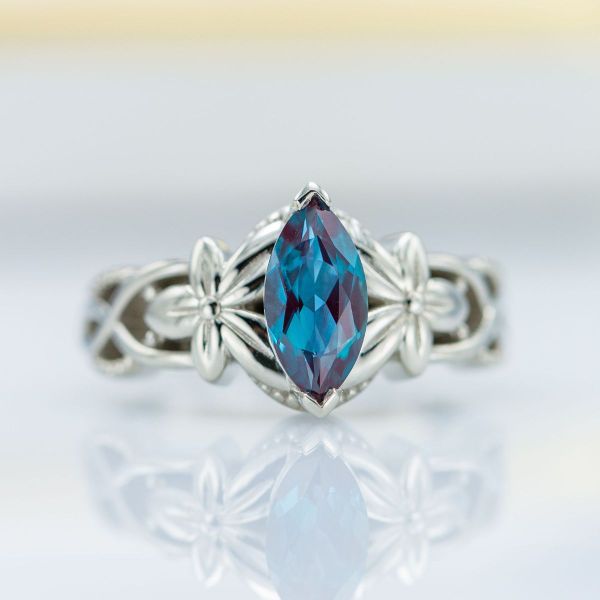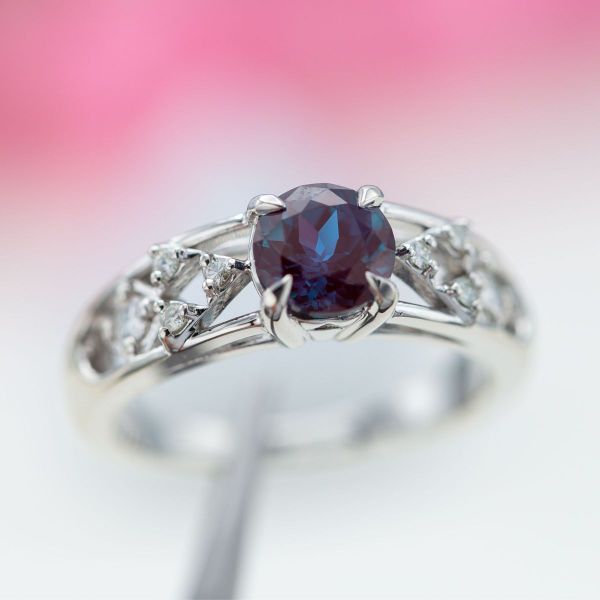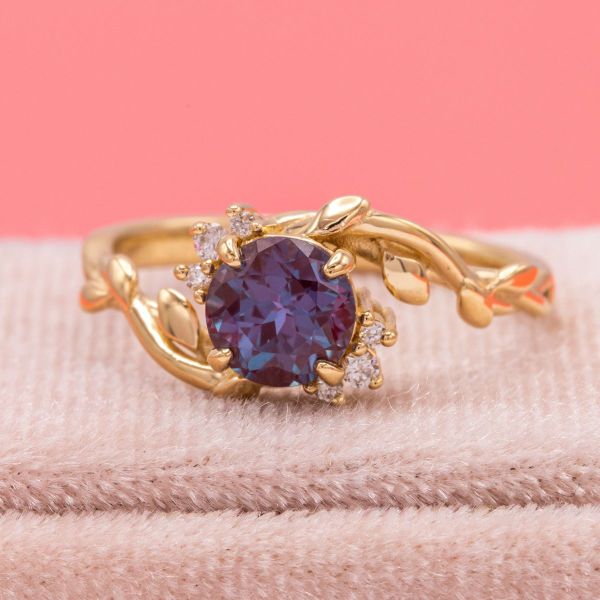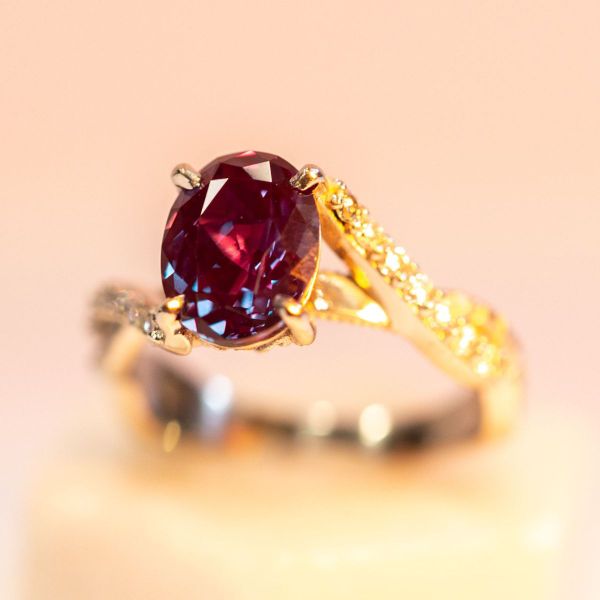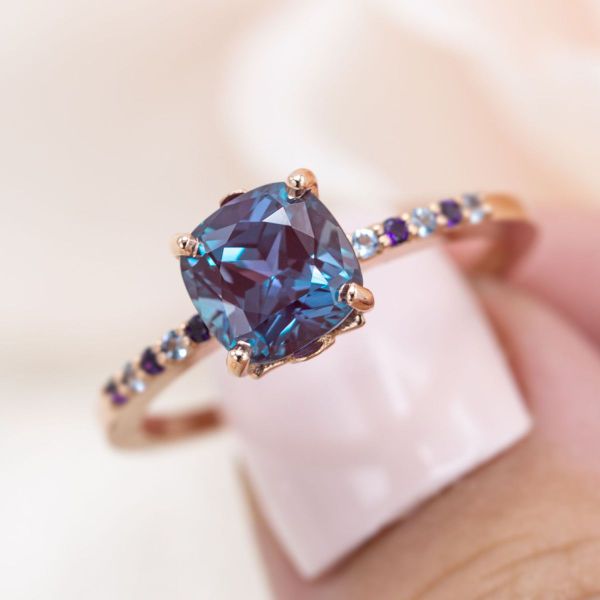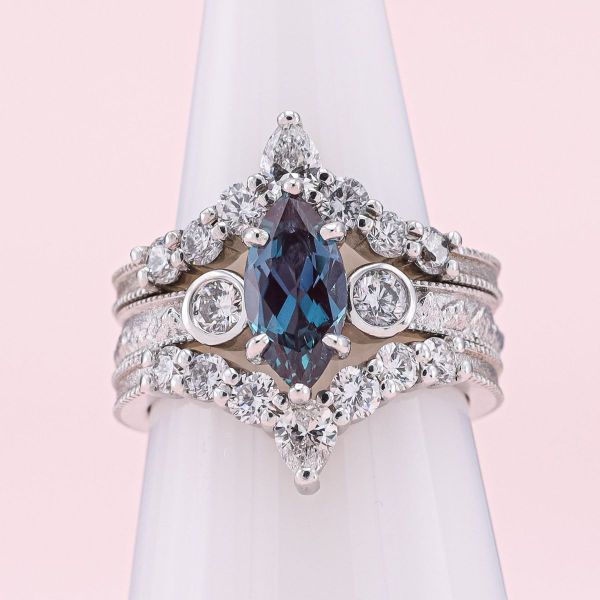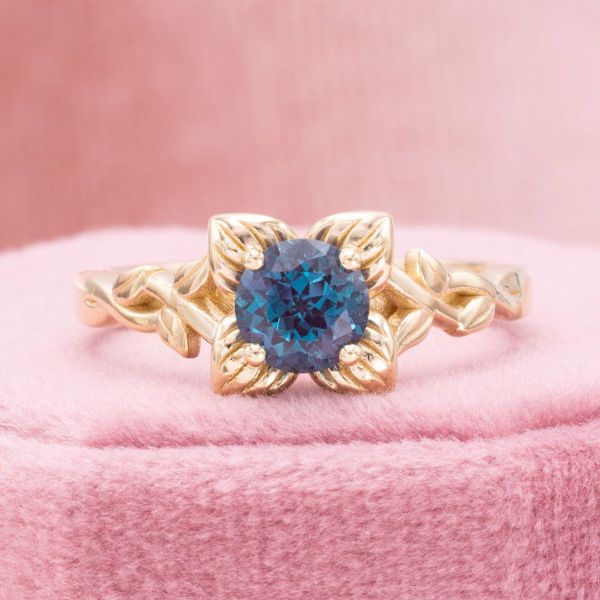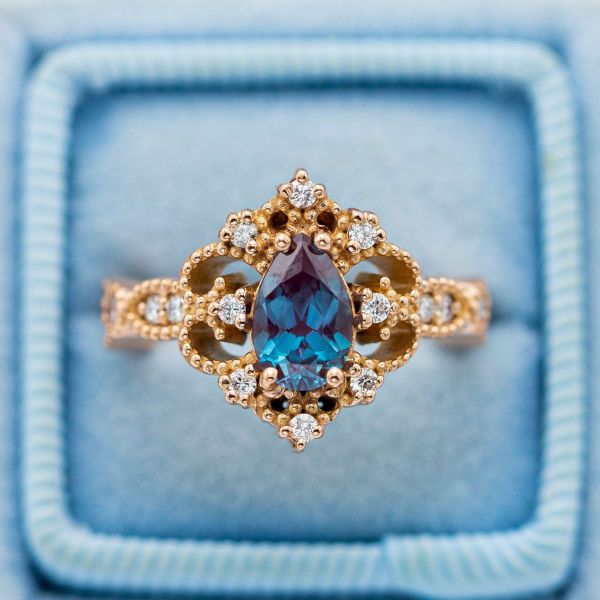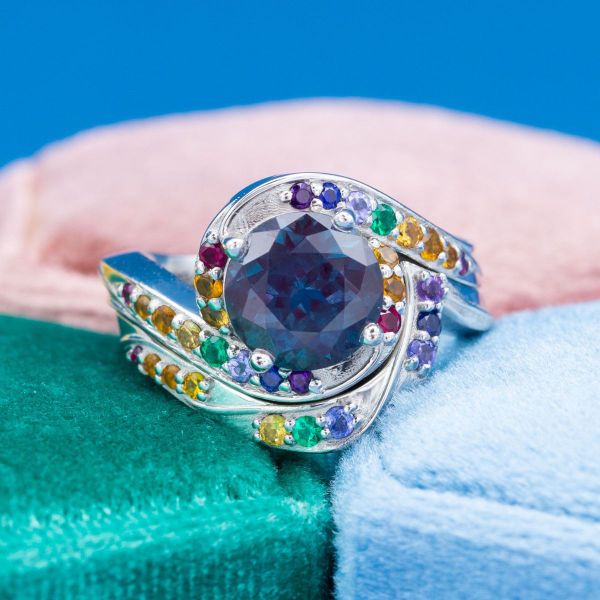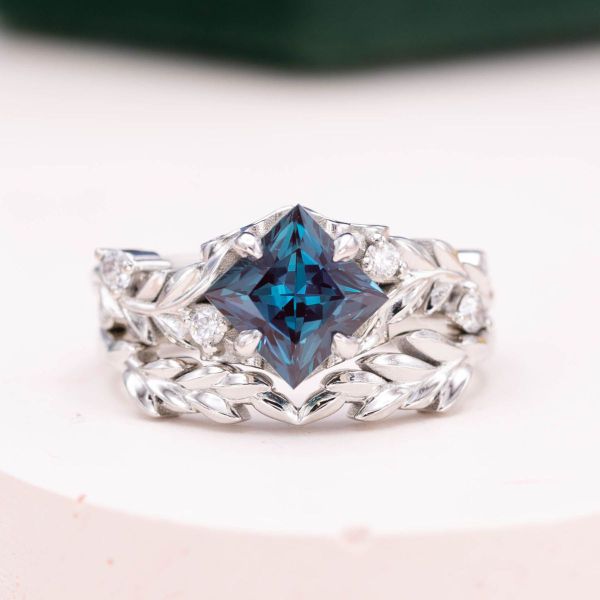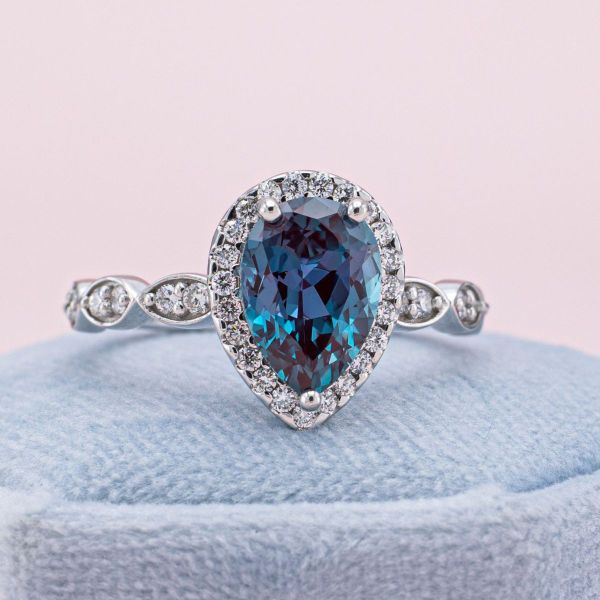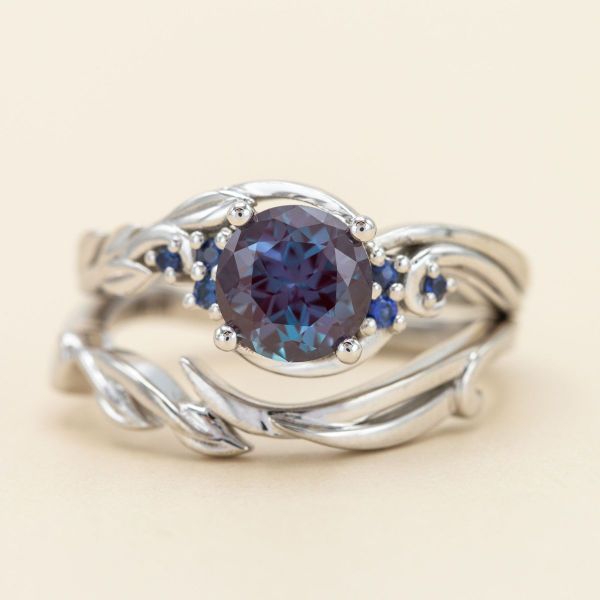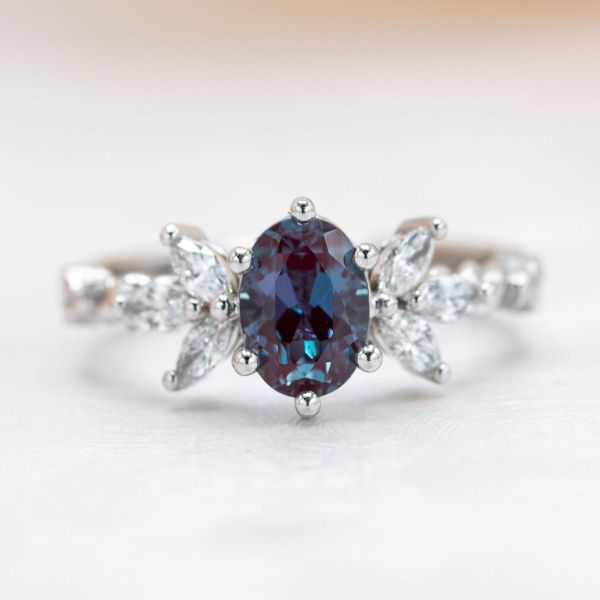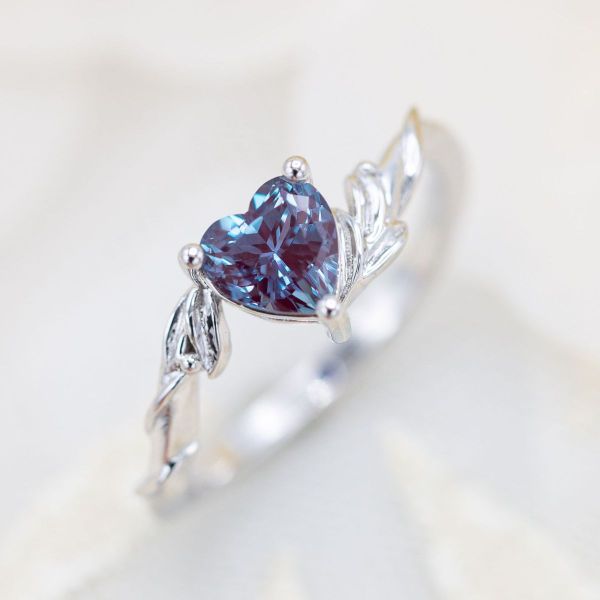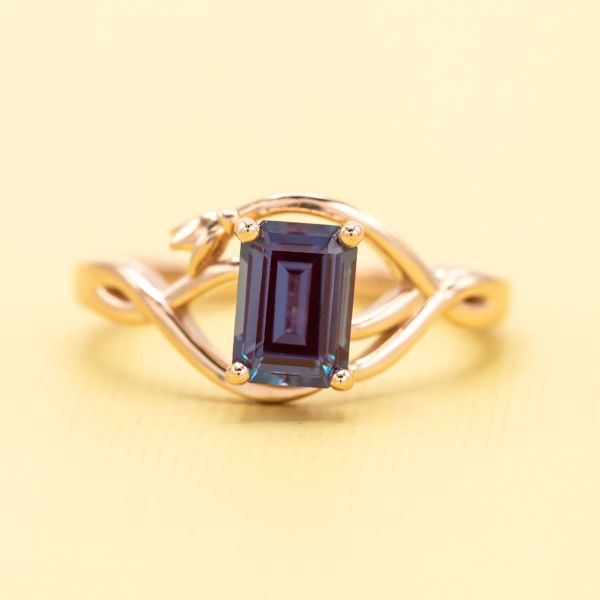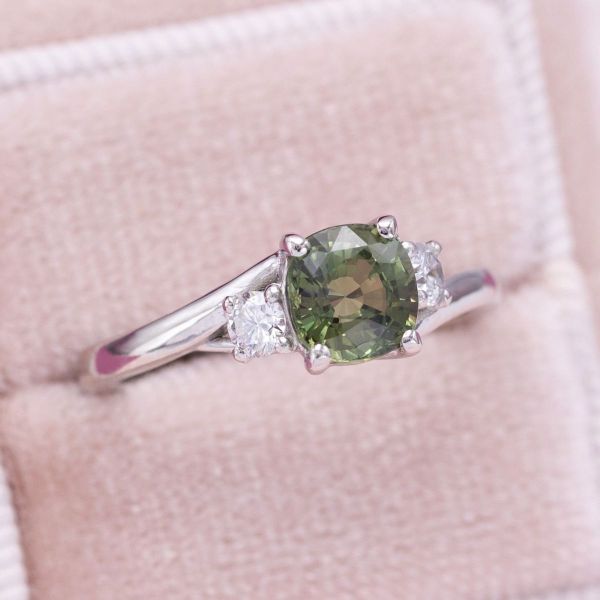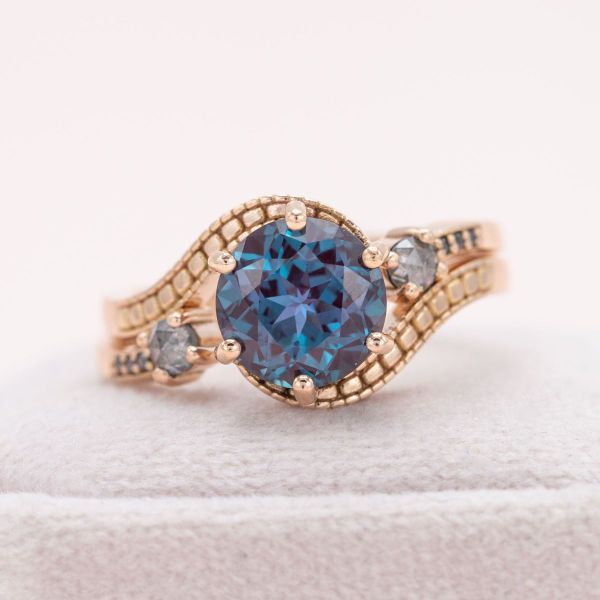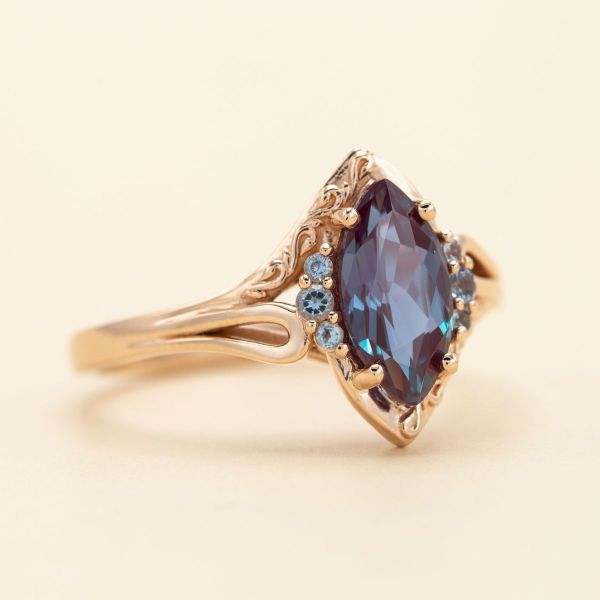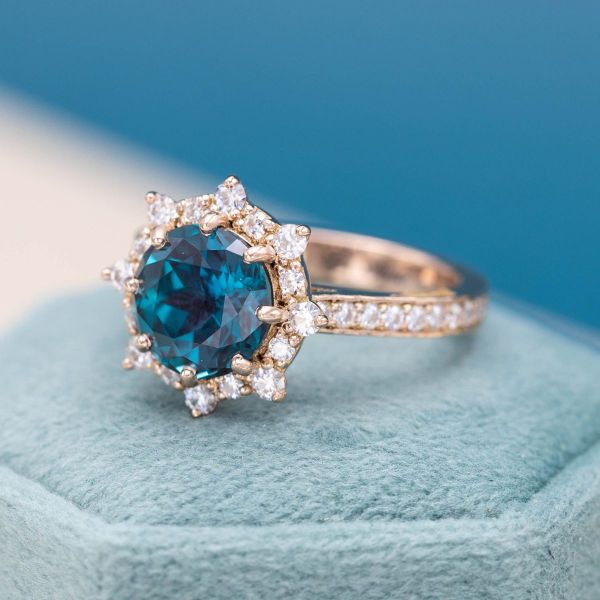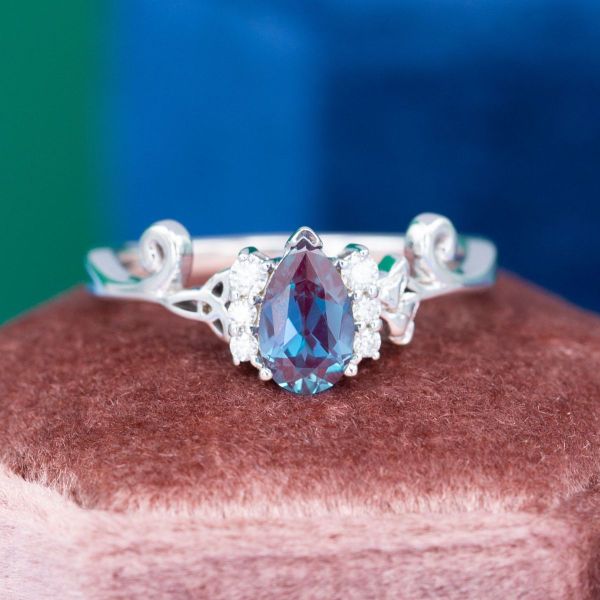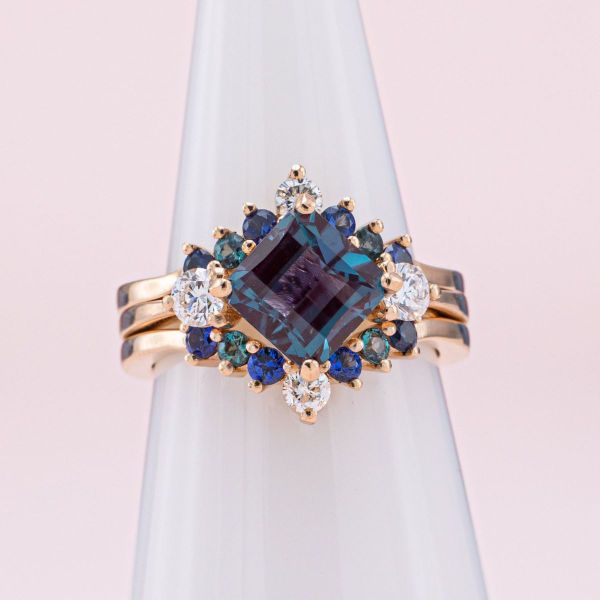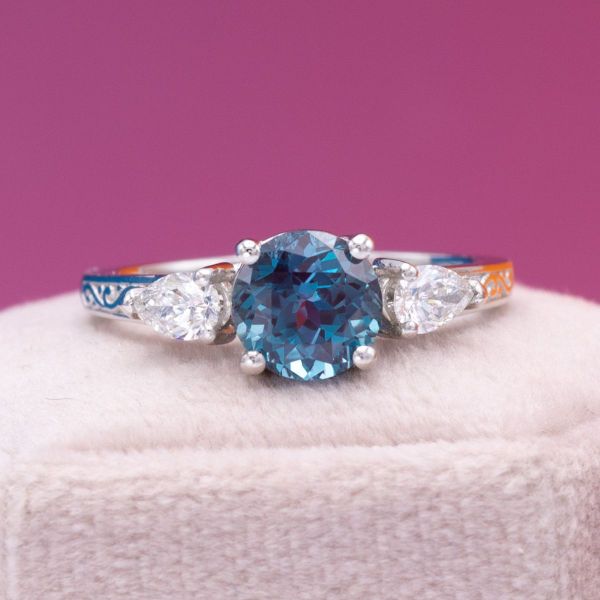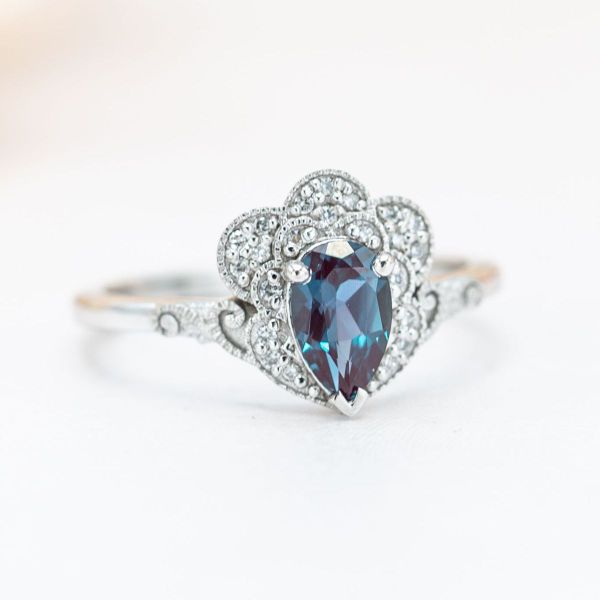Gemstone Knowledge
Is alexandrite a good choice?
Alexandrite is a naturally rare, color-shifting stone that offers style and durability, but is it a good choice as an engagement ring?
Is alexandrite a good choice for your engagement ring?
Discovered in Russia’s remote Ural Mountains in the 1830s, alexandrite is by no means a newcomer to the gemstone world. However, this rare, colorful stone is quickly becoming a popular option for engagement and fashion jewelry. Thanks to lab made options, couples are falling in love with its hot and cold appeal for a colorful pop in their engagement rings. It even joined pearl and moonstone as the more “modern” option for a June birthstone in the 1950s, making it perfect for a June bride or a fianceé with a June birthday!
A member of the chrysoberyl family that sports both cooler and warmer hues (but more on that later), alexandrite has a lot to offer couples as an engagement ring stone, and we think it can be a great choice for anyone looking to add a splash of color–or two–to their ring. So let’s dig into what makes alexandrite a great engagement stone.
Alexandrite is named after Czar Alexander II of Russia, the heir apparent who came of age around the time the stone was discovered. He was assassinated in 1881, but his name lives on with the regal alexandrite stone.
Reasons to love alexandrite
It shifts color
You read that right: alexandrite actually appears to change color over the course of the day! At first, you may think you’re seeing things when the typically bluish-green alexandrite takes on a purplish-red hue in certain lighting, but we promise this is all part of this rare stone’s dynamic personality.
An “emerald by day, ruby by night”, alexandrite’s color shifts depending on light source, and the amount of color change varies from stone to stone. In daylight or under fluorescent lights, it often takes on a greenish hue. But under incandescent or dimmer light sources, you’ll notice a purple-red or brownish tone instead
Alexandrite is also “pleochroic”. Wait, but isn’t that a dinosaur? That’s a plesiosaur, and nope! Pleochroism occurs when a stone displays different colors from varying angles, meaning your alexandrite may appear blue, orange, or purple-red as you move it around. When it’s faceted, alexandrite has plenty of angled surfaces for hints of this color change throughout the stone.
Why choose a stone that’s only one color when you can have the versatile color palette of alexandrite? If you want more than just a simple splash of color for your engagement ring, alexandrite may be perfect for you!
It's very durable
Alexandrite is rather strong when compared to other popular colored stones, providing excellent durability for daily wear. It’s an impressive 8.5 out of 10 on the Mohs scale of hardness, which puts it just below sturdy rubies and sapphires and just above trendy picks like aquamarine and morganite.
This means that alexandrite is a good option even for people who work with their hands! And it’s pretty scratch resistant, so it can reasonably withstand the typical scratches and scuffs that come with everyday life. Alexandrite is also stronger than quartz–a common material in dust–so you don’t have to worry about it wearing down too much over time. Just be careful if you place your ring in a jewelry box with harder gemstone pieces, as this could lead to scratching.
It looks amazing in any setting
Thanks to its chameleon-like color qualities, alexandrite looks remarkable in just about any setting. Its color shifting means alexandrite is a sight all on its own and ideal for solitaire settings where it’s able to be the center of attention.
That being said, alexandrite also sparkles when surrounded by white accent or side stones. White diamonds and moissanites are great for providing a neutral, sparkling backdrop for alexandrite’s dual personality. What’s more, the varying warm and cool tones you might find in alexandrite complement all metal colors, from white gold and platinum to sunnier shades like yellow and rose gold. No matter what setting you choose for your alexandrite, it’s bound to look stylish and unique!
It comes in all shapes and cuts
Alexandrite truly flourishes in any shape, and you can find it in brilliant, step, and mixed cut varieties. It’s pretty amazing that no two alexandrites look exactly alike, and cut can make all the difference in which colors appear where in your stone.
Brilliant cut alexandrites offer a fractal display of sparkle and subtly changing colors as you move the stone around. The round brilliant is a popular shape for alexandrite, but fancy shapes can really amp up the uniqueness of an already one-of-a-kind engagement ring featuring this stone. Just look at some of the brilliant fancy shapes couples have used when designing their rings with us. It’s almost as if each one brings out a different side of alexandrite’s playful disposition!
Rather than traditional sparkle, step cut varieties show off more of each alexandrite’s color throughout the corners and facets of the stone. They produce a sophisticated shine that’s perfect for solitaire or minimalist settings, but we love when couples use brilliant cut diamond accents to bring a bit of sparkle to the more understated appeal of a step cut alexandrite.
In addition to the sparkling shapes and cuts that are most popular for engagement jewelry, there are also opaque cabochon alexandrites that feature a “cat’s eye” effect. They’re still pleochroic, but these alexandrites have a subdued beauty with fewer facets and a striking design. It looks like a bright line runs down the center of the stone like a thin pupil in a cat’s eye (hence the name!). It’s a bit rare to find alexandrite in this smoother form, but it’s worth the effort and cost if you or your partner want a stone without the usual sparkly cut.
Other considerations
If you’re thinking of choosing an alexandrite center stone for your engagement ring, here are just a few other things to consider as you begin your search:
Color
If you’re shopping for an alexandrite with the sought after green-to-red color change, just know that most stones probably won’t offer this exact color scheme. Don’t get us wrong: there are definitely alexandrites with high-quality color available for your engagement ring, but part of this stone’s appeal is just how rare it really is! Nowadays, most natural alexandrite comes from East Africa, Sri Lanka, and Brazil, and color quality and the intensity of the color change can vary in natural stones. Natural alexandrite is also fairly dark, meaning mixed lighting can make it difficult to see the color transition effectively. You may come across variations that transform to brownish or purple hues at night as well, and they still offer similar shifts from cooler to warmer hues throughout the day.
There are also lab made alexandrites, which are most popular among our couples and come in varying colors, often exhibiting a blue to purple transition that’s equally lovely. The saturation of all of these colors can differ, and some stones are lighter or darker than others.
So there isn’t just one color option when it comes to alexandrite, and both natural and lab stones provide some level of color transition. But those uniquities are what makes it such a beautiful choice! Because alexandrite’s color can vary widely, be sure to look at multiple stones in different cuts and shapes and under both natural and dim lighting to see which color combination speaks to you (and fits your budget!).
If you're looking for a durable, colorful stone similar to alexandrite, try sapphire or tanzanite. They don't experience any significant color change, but they have stunning blue and purple hues respectively and look dazzling in engagement settings.
Price
Speaking of budget, we won’t sugarcoat it: natural alexandrite can be pricey. Like, pricey enough to make natural diamonds look cheap. For a 1 carat mined alexandrite stone, couples can expect prices of anywhere from $4,000 to a staggering $70,000. And, because alexandrite that is green during the day and red at night is the rarest and most prized variation, it’s also the most expensive and sits closer to the top of that price range. Whether these prices are right in your budget for just your ring or your entire wedding budget, our team at CustomMade can help you find a gorgeous alexandrite for your dream engagement ring!
Luckily, lab made alexandrite has the same optical and physical properties, and prices hold steady around $525-$550 for a similar stone of the same size. They exhibit blue to purple or blue to red color transitions compared to the green hue of natural stones, but their color change is just as stunning. Lab made alexandrite is a perfect option for anyone wanting the allure of a color changing stone without breaking the bank, and you can spend all that saved money on premium wedding bands, a lavish honeymoon, or even an open bar (we like the last one!).
Cleaning and maintenance
It may be helpful to know that alexandrite is pretty easy to care for! Because it’s so durable, alexandrite can be cleaned like most pieces of fine jewelry: with warm water and dish soap. First, you’ll want to mix dish soap—Dawn works great—with warm water in a small container and soak your ring for roughly 10-15 minutes. Then, gently scrub your ring with a soft toothbrush, rinse, and finish it all off by drying with a lint-free towel.
We also recommend routine inspections with a trusted jeweler to make sure your alexandrite stays securely within its setting. It’s a perfect opportunity to get a professional cleaning as well, which can be done more frequently or every few months as needed. Finally, store your alexandrite engagement ring in its own bag or in a lined jewelry box away from other pieces to avoid any scratches!
Why we love alexandrite
Let’s be honest: how often do you see an engagement stone that changes color? We love the fiery and cool combination of alexandrite’s hues that can represent two lives coming together in marriage, and it’s a great choice for a partner with a June birthday or a fashion-forward bride. Its rarity and durability make it particularly special as well, withstanding the wear and tear of daily life while still offering modern appeal and versatility. We see no downsides here, and take a look at our alexandrite engagement ring gallery for some inspiration regarding your own ring today.
About CustomMade
CustomMade designs and creates one-of-a-kind, custom engagement rings and fine jewelry. Each piece we create is inspired by you, designed for you, and made just for you.
